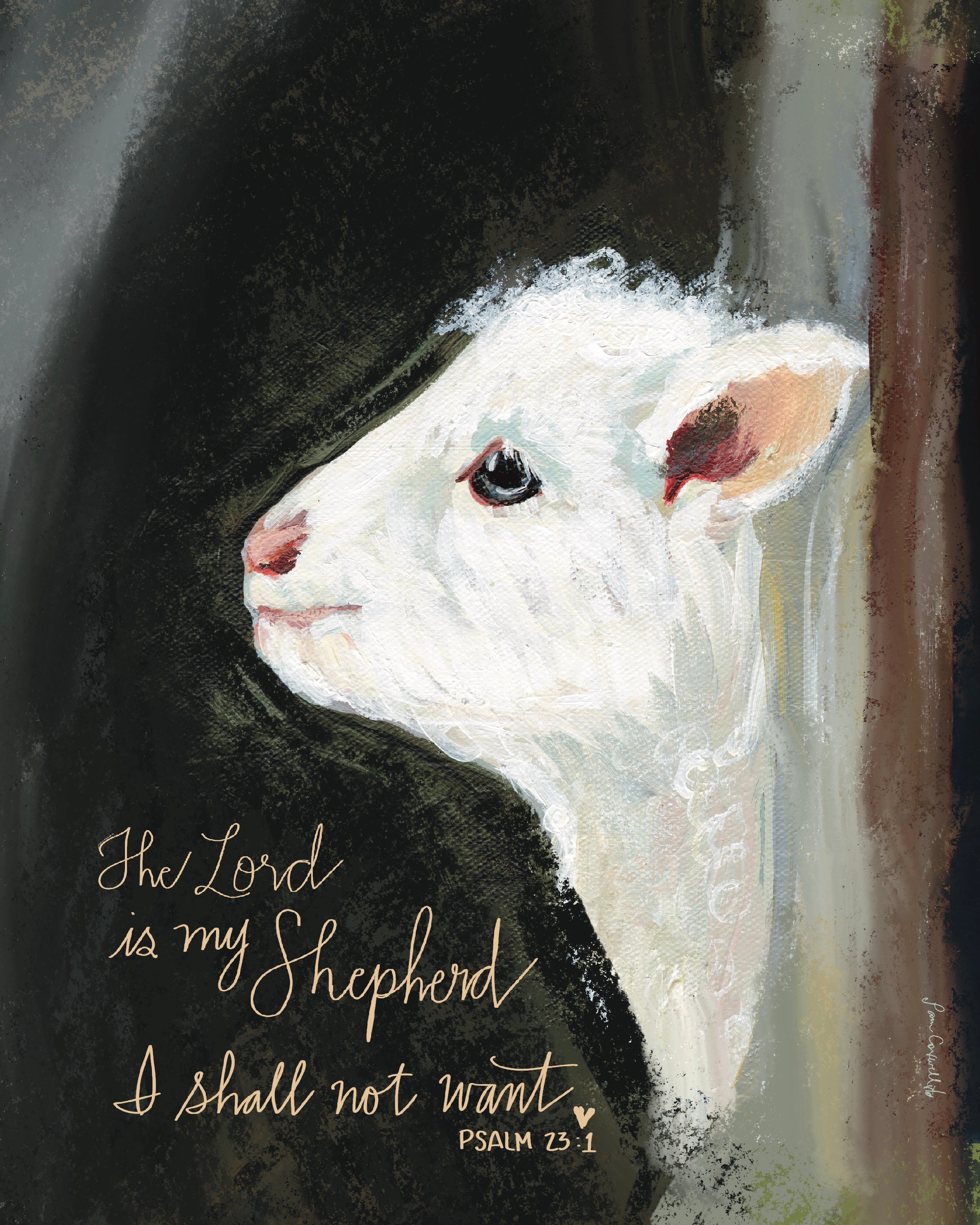“I shall not want.”

It’s taken from Psalm 23.
“The Lord is my shepherd; I shall not want”. Have you ever thought about what the writer meant by that?
Psalm 23 is a beloved passage of the Bible. It’s interesting that even people who aren’t very familiar with the Bible can hear “The Lord is my shepherd; I shall not want…”, and many of them will immediately associate those words with the Bible.
This passage of scripture was actually written by a shepherd named David. David was a son of a shepherd writing about The Lord God. Jesus would later confirm this by calling Himself The Good Shepherd. So there’s a lot of “shepherd talk” in Psalm 23. As much as I love anything about sheep, lambs, and shepherds, I didn’t really appreciate the depth of power in the words in this chapter until I started learning more about “shepherd talk”.
If you want to understand this “shepherd talk” and also enjoy some beautiful artwork, I want to recommend a book called “A Shepherd Looks At Psalm 23” by W. Phillip Keller. The author breaks down this passage in great detail to help us have a better understanding of the meaning of the words, so that we can better understand how very similar we are to sheep and how very similar God is to a shepherd.
His description of the shepherd and sheep was so comforting to me. He describes David writing this Psalm from the perspective of the sheep. He spoke with a strong sense of pride, devotion, and admiration. It was as though he literally boasted aloud, “Look at who my shepherd is-my owner-my manager! The Lord is!” After all, he knew from firsthand experience that the lot in life of any particular sheep depended on the type of man who owned it.
This realization was very eye opening for me, and it has also been life changing. It has affected my artwork as well. Now, when I paint artwork with sheep, I’m flooded with the reminder that I belong to the Good Shepherd. (John 10:10) With the brush strokes, I think of the gentle care He takes over my life.
For many years, I never really understood the “I shall not want’. I felt like I couldn’t say these words because unfortunately, my list of “wants” was actually a very long list. But after getting a better understanding of the language of a shepherd, I had a new understanding and appreciation. Mr. Keller says these words describe “a sheep utterly satisfied with its owner, perfectly content with its lot in life.”
It’s my prayer that I could become more content with the care of my Good Shepherd and stop craving more. It’s in those moments that my heart & mind get glimpses and reminders that the Good Shepherd laid down HIS life for me; HE diligently pursues me; HE patiently guides me; HE lovingly corrects me: HE sufficiently provides for me…. It is then that in that moment, I remember I am not only alive, but also flourishing under HIS tender care. It’s at that moment I can with a grateful heart say, “I shall not want”. It’s not a “one and done” deal… It’s a process that I have to continually repeat. But as long as I have breath, I know I will need continual reminders of who my Good Shepherd is. So, next time you see one of my paintings of a sheep, just know while painting the sheep, I was working back through this process one more time!

Leave a comment